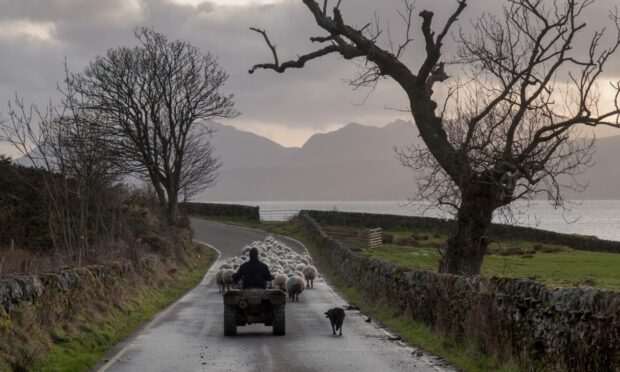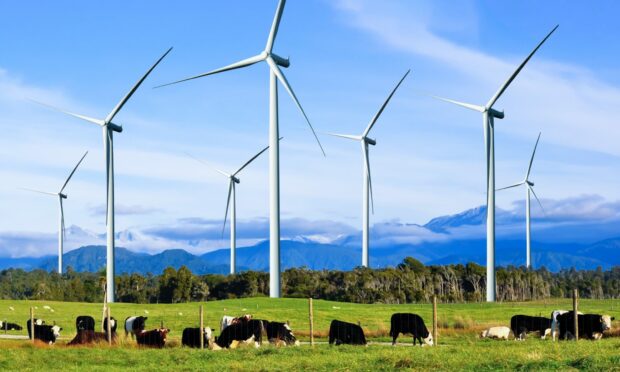As many of us reflect on what an unusual year 2021 turned out to be, I’m happy to report another busy and productive year in office as the tenant faming commissioner (TFC).
We have now published seven TFC codes and 16 guides, giving advice on important tenant farming issues and promoting good business relations in the sector.
At the beginning of the year, I provided information on how to finalise amnesty agreements for those that had submitted notices before the December 2020 deadline but hadn’t yet concluded negotiations.
It’s difficult to conclude how many tenants took up the opportunity under the amnesty on tenant’s improvements, but those who did now find themselves in an advantageous position regarding any tenancy transaction that requires improvements to be agreed and document, such as rent reviews, relinquishment and waygo.
New legislation
February 2021 saw the introduction of new legislation which enables a tenant with a secure tenancy to relinquish it in return for a payment by the landlord based on a specific valuation methodology.
Or, if the landlord does not wish to buy the tenancy, to assign it for value to a new entrant or progressing farmer.
Under the new legislation the TFC is obliged to appoint a valuer to carry out the valuation and I set up a panel of suitably qualified and experienced valuers to draw upon.
To date I have received two formal notices of intention to relinquish but I am aware that the legislation has prompted discussions for private relinquishment deals.
I suspect that the new legislation may be enabling private settlements to take place that are in tune with the valuation provisions in the legislation but without going through the formal process.
It takes time for such discussions to come to fruition so it remains to be seen if the legislation will provide opportunities for new entrants.
Land movements
A useful benchmark for movement in and out of the sector is the Central Association of Agricultural Valuers’s annual Land Occupation Survey, which includes land movements up to the end of 2020.
The survey for Scotland shows that activity levels continued to be low with roughly a balance between land leaving the sector and land flowing in.
However, within that the 1991 Act, or secure tenanted sector, continues to erode with new lettings being predominantly bare land and many let for short terms.
The average length of new tenancy has increased to 6.5 years due to the greater number of MLDTs (Modern Limited Duration Tenancies) being let in 2020, although SLDTs (Short Limited Duration Tenancies), contract farming and seasonal lets all remained more popular.
This begs the question that if the let sector is to expand what might attract (new) private owners or retiring owner occupiers to let land?
Will new policy and support post-2024 make letting land attractive or what other forms of land occupation will emerge as being productive for both landowner and land user?
I get the impression that the new sense of direction for agriculture coupled with the increasing average age of a tenant is opening conversations about leaving or passing on tenancies.
The one thing that seems certain at the moment is that there is no shortage of people looking to farm.
Demand for land
In recent months I’ve been contacted by several people, both new entrants and tenants coming to the end of their tenancies, looking for land to let.
I always direct them to the excellent services of the Scottish Land Matching Service with the caveat that there are more people looking for land than there are people with land to offer.
Throughout 2021 I also received requests for advice around repairs and maintenance of fixed equipment, rent reviews and sporting issues.
As in previous years enquiries have been received from throughout Scotland, with Aberdeenshire and the Borders providing the greatest number of new contacts, closely followed by Perth and Kinross, the Highlands and Argyll and Bute.
In total nearly 100 people contacted me looking for advice on tenancy matters with 70% of these being tenants or tenant’s representatives.
I’m hoping that 2022 will bring more clarity for the sector in terms of future support and I’m looking forward to working with Scottish Government and others on ensuring proposals under the new Agriculture Bill are suitable and accessible for tenants.
Documentation is key
When asked if I have any advice for tenants and landlords for the new year I would simply say – record and document any work on the holding and keep a record of meetings between landlord and tenant.
You’d be surprised at how many disputes could be avoided if the correct documentation had been kept and also how both tenant and landlord can find themselves out of pocket if they don’t have the evidence to support a claim.
As always, I am available for any tenant, landlord or their representatives who are seeking technical information or help where relationships between parties are difficult.
I also plan to keep the TFC mediation scheme open throughout 2022 to anyone in the sector who might benefit from the services of a professional mediator – the mediations we have enabled so far have demonstrated quite remarkable positive outcomes for all involved. Please do get in touch if you would like to find out more.
Finally, I would like to take this opportunity to wish you all the best for 2022.
Visit landcommission.gov.scot for more information or contact me on tfc@landcommission.gov.scot or call 01463 423 300.
Bob McIntosh is Scotland’s tenant farming commissioner



